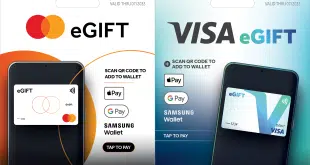Merchants contend with fraud all the time, but the 2015 edition of the LexisNexis True Cost of Fraud study has found that their fraud costs are tallying 1.32% of revenue in 2015, a whopping 94% increase from the 0.68% rate in 2014.
All categories of merchants in the LexisNexis Risk Solutions study experienced increases in the cost of fraud. Among large e-commerce merchants, fraud costs as a percentage of revenue increased from 0.85% in 2014 to 1.39% in 2015. M-commerce merchants fared no better, with the rate going from 1.36% in 2014 to 1.68% in 2015. The jump for international merchants was from 1.21% to 1.56%.
Part of the explanation for the increases is that criminals are making ever-increasing attempts to commit fraud, Aaron Press, LexisNexis Risk Solutions director of e-commerce and payments, tells Digital Transactions News. “The attempts keep going up and up,” Press says.
In a month, merchants in the study experienced 156 successful fraudulent transactions, up from 133 in 2014, but they stopped 177, more than the 165 last year.
Merchant practices to curtail the amount of a fraudulent transaction appear to be working. The value of a successful bad transaction held steady at $113, virtually the same as the $114 sustained last year. And they are getting better at stopping dodgy high-value transactions, with $133 as the average value of a prevented fraudulent transaction, up from $113 in 2014.
Press says merchant fraud models could be improving or they may have lowered their thresholds for when to apply fraud-prevention measures.
The study also found that debit card fraud spiked in 2015, accounting for 30% of fraudulent transactions, up from 16% in 2014 and 15% in 2013.
There are a couple of reasons for that. One is that whether or not consumers use their debit cards to make online purchases, the data associated with them still works, and that’s fine with criminals, Press says.
Another factor is that criminals predominantly get stolen card data from the point of sale, not from e-commerce sites, he says. “The largest compromises come from brick-and-mortar retailers.” The increasing number of debit cards and consumer use of them means more of that data is vulnerable.
Criminals are agnostic about whether the payment data is from a credit or debit card, Press says. In the past, they preferred credit cards because potentially large credit lines meant more goods could be purchased, but today criminals seek volume, placing all cards at risk, he says.
The increase in fraud costs for mobile commerce retailers also took a toll on their confidence in the sales channel. When asked their reasons for accepting mobile payments, 64% cited convenience for the customer, compared with 85% in 2014. Only 51% did so because it meant meeting consumer expectations, compared with 61% in 2014.
The sole increase was the 20% who said they received incentives from acquirers, such as free hardware, price discounts, or similar measures, Press says. That’s important for those merchants when the return on the investment might be borderline. The sentiment among them appears to be, “The ROI is not obviously enough, but if someone is willing to foot the bill, we’re going to do it,” Press says.
“There’s still a lot of optimism about mobile,” Press says, “but also a lot of realization over the overpromised and under-delivered proposition.”





